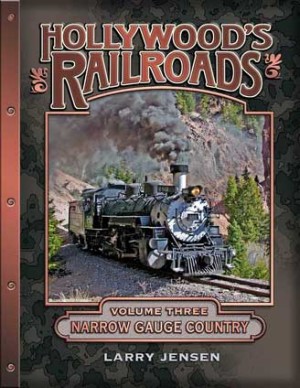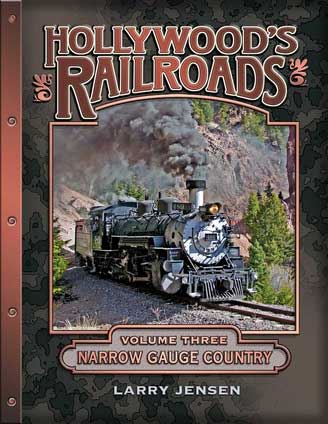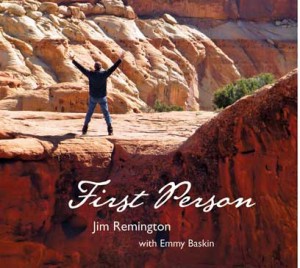 Hollywood’s Railroads,
Hollywood’s Railroads,
Volume Three:
Narrow Gauge Country
By Larry Jensen
Cochetopa Press 72 pages
ISBN 978-0-692-31351-0
Reviewed by Forrest Whitman
Here’s a little gem of a railroad book that explains a lot about Colorado Central country. As recently as 1968, both of our narrow gauge railroads in southern Colorado were threatened with extinction. The D&RGW was actively getting rid of its once proud narrow gauge network. All that was left was the 64 miles from Chama to Antonito and the Durango to Silverton stretch. They were scrapping the engines, selling the rails and even selling off the right of way. Then came Hollywood to the rescue, as this book proves.
It’s a little bit of a stretch to say that Hollywood “saved” the Cumbres and Toltec Scenic Railroad and the Durango and Silverton, too. On the other hand, it was movies like Butch Cassidy and the Sundance Kid (starring Paul Newman and Robert Redford) that helped save them. The Good Guys and the Bad Guys, which director Burt Kennedy filmed mostly on Cumbres Pass, showed off the Cumbres and Toltec line in lovely autumn splendor. Other films like Around the World in 80 Days helped give a sense of our railroad scenery. Harrison Ford in Indiana Jones and the Last Crusade features him jumping on a water spout still seen on the C&TS. Those movies gave steam to the effort of Colorado and New Mexico to put money into the tourist lines, and made it hard for the Rio Grande to scrap the little bit left.
[InContentAdTwo]
Jensen does an excellent job of compiling the long history of films made on the two lines. He chronicles the “golden age” of film here, running from about 1948 till 1956. Many stars were here then, including Marilyn Monroe, Edmond O’Brian and James Stewart. These were big-budget films. In the 1951 film Denver & Rio Grande, two steamers were sacrificed in a real head-on collision. That produced more of a bang than expected, and metal was flying four hundred yards away. All of that movie railroad history is carefully told by the author.
The railroad photos that accompany the text are outstanding as well. He’s scoured the archives for photos of the scenery as well as shots of the films being made. They give depth to the narrative. Especially fun are his shots of stuntmen doing wild things. No horse ever liked running alongside a train or having a stuntman jump off. They did it though. His shot of the baggage car (made of balsa wood) blowing up in Sundance Kid is priceless. Those two stunt men earned their pay, as the explosive charge was much too large. The book is full of anecdotes like that.
Every now and again a special railroad book crosses my desk, and this is one of them.
Read it to get a special slant on our southern Colorado history. Or read it if you saw any of those many films made on our local rails. You’ll have some flashbacks.


